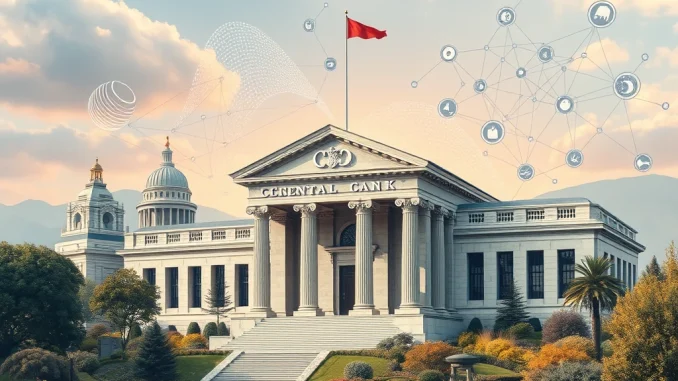
The world of finance is constantly evolving, and now, even central banks are looking to cutting-edge technology. Project Pine, a joint effort between the New York Fed and the Bank for International Settlements (BIS), is exploring how smart contracts and tokenization could fundamentally change how central banks execute monetary policy. This isn’t just academic; initial tests show promising speed and flexibility, sparking significant interest in the future of digital finance.
What is Project Pine and Why Does it Matter?
Project Pine is an initiative specifically designed to test the practical application of smart contracts and tokenized assets within a wholesale financial environment. The core question being addressed is whether these technologies can provide central banks with more efficient and adaptable tools for managing the economy.
- The Players: New York Fed (a key part of the US Federal Reserve System) and the BIS (an international financial institution owned by member central banks).
- The Technology: Smart contracts (self-executing code) and tokenization (representing assets digitally).
- The Goal: To enhance the speed and flexibility of central bank monetary policy operations.
How Do Smart Contracts and Tokenization Help Central Banks?
Think of smart contracts as automated agreements. In a central banking context, they could potentially automate complex processes like:
- Issuing and managing central bank reserves.
- Executing repurchase agreements (repos).
- Distributing liquidity during times of stress.
Tokenization allows assets, like central bank money or securities, to be represented as digital tokens on a shared ledger. Combined with smart contracts, this could enable near-instantaneous, programmable transactions, offering a level of control and speed currently unavailable.
Testing the Potential: What Did Project Pine Discover?
As reported by Cointelegraph, the Project Pine team developed a prototype toolkit using these technologies. The tests involved simulated scenarios designed to mimic real-world monetary policy operations. The results were encouraging:
The prototype demonstrated:
Fast Responses: Transactions and policy adjustments could be executed much quicker than with traditional systems.
Flexibility: The system could adapt to different simulated conditions and policy needs.
Real-Time Adjustments: The technology allowed for potential adjustments to policy parameters in real-time, offering a more dynamic approach.
This potential for speed and flexibility in implementing monetary policy is a significant finding. In economics, the timeliness of intervention can be crucial, and smart contracts offer a glimpse into a future with more responsive tools at the central bank’s disposal.
What’s the Catch? The Infrastructure Challenge
While the technical potential demonstrated by Project Pine is exciting, the report from the New York Fed and BIS also sounded a note of caution. A major hurdle identified is the current state of financial infrastructure.
The report notes that most existing financial systems and market structures are simply not yet ready to fully support the widespread adoption of this technology. This involves:
- Legacy IT systems that aren’t compatible.
- Legal and regulatory frameworks that need updating.
- Operational procedures across financial institutions that would require significant change.
- The need for interoperability between new and old systems, as well as between different DLT networks.
Bridging this gap is arguably a larger challenge than the technology itself and will require significant coordination and investment across the financial ecosystem.
Project Pine in the Broader Digital Currency Landscape
It’s important to place Project Pine within the context of other digital currency explorations by central banks globally. While this project focuses on wholesale applications (between financial institutions and the central bank) and specific policy tools, it contributes valuable insights to the broader discussion around Central Bank Digital Currencies (CBDCs) and the use of distributed ledger technology (DLT) in finance.
This research helps central bank understand the plumbing required for a potentially tokenized future, whether that future involves a full-fledged CBDC or simply the integration of smart contract capabilities into existing or new wholesale settlement systems.
Conclusion: A Promising Step Towards the Future
Project Pine offers a compelling look at how smart contracts and tokenization could equip central banks with unprecedented speed and flexibility in executing monetary policy. The findings from the New York Fed and BIS simulations are a significant step in understanding the practical benefits of these technologies in a high-stakes financial environment. While the path forward involves navigating substantial infrastructure challenges, the potential rewards – a more responsive and potentially more effective central bank monetary policy – make this area of research crucial for the future of global finance.



